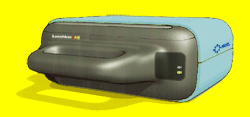Concept:
Currently scientists are using algae to produce hydrogen and have discovered that it is a viable renewable energy form, in that,algae is everywhere and it could also be used to produce biodiesel. One of the main hurdles for the research is to find the most productive strains of algae. Since there are potentially millions of strains, this task is monumental.
Lunchbox Laboratory is a prototype for a potentially distributed research tool that would be sent to schools such that young scientists can do primary screening of a collection of algae strains. This will serve as a preliminary screening such that non productive strains will be ruled out and only productive strains will reach labs. This project enables students to participate in big science as well as network with other students nationwide to compare notes.
This project is relevant for several reasons:
-connects students
-empowers students by being involved in "real" research
-points to the importance of shared/open/public research rather than privatized research
-highlights innovative, renewable energy source
We se there being several forms to convey this work:
1. Lunchbox Lab
2. Website
3. Short animation
Contents of the Lunchbox Lab:
-9 Algae Samples
-9 custom designed glass beakers
(currently researching the viability of re-using old Crystal Geyser bottles)
-Instructions Pamplet
-Controlled light source: 25 led's
-Embeded pressure sensor to control light source
Design of Lunchbox Lab-
The design will mimick a lunch box. The bottom half will is light tight. The glass beakers will sit in holes such that the bottom half of the beaker will sit in darkness and the top will be visible and accessible to inject samples etc.
Design of main bioreactor.
The bioreactor will be designed such that the cocktail of algae will sit in a large section in the dark and a small arm of the beaker will be visible and coated with an H2 sensor such that it will turn
blue if it detects H2. These will be made of blown glass with stoppers and valves to control flow.
H2 sensor design:
Custom H2 sensors made at CSM and tested on cells in their lab. This coating can be put on almost any opaque glass surface. For this kit I was thinking that we would coat the end of a glass:glass stopper fitting that would plug into the flask. The sensor can be regenerated simply by detaching it from the reactor and allowing it to react with O2. Of course, the sensors will not turn blue when any oxygen at all is present, so we will use a glucose oxidase system to assist the algae in consuming the oxygen in the dark. Basically, the "student" would add sugar and an enzyme, glucose oxidase, (available cheaply by the gram) to consume all the oxygen in the reactor.
Look and Feel Explorations:
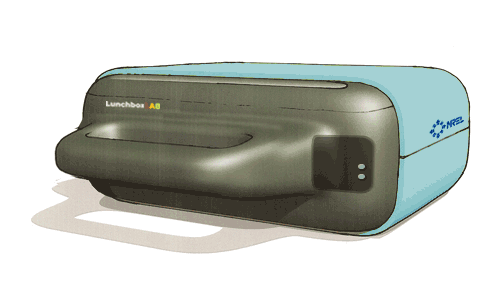
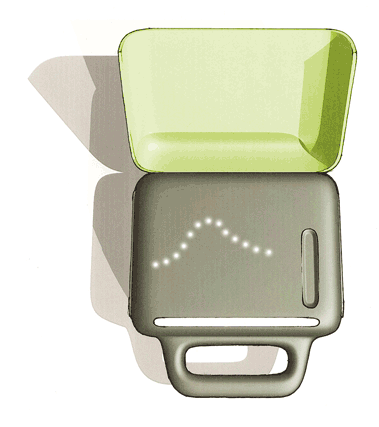 |
|
|
| LED Animation of Progress Levels |
|
|
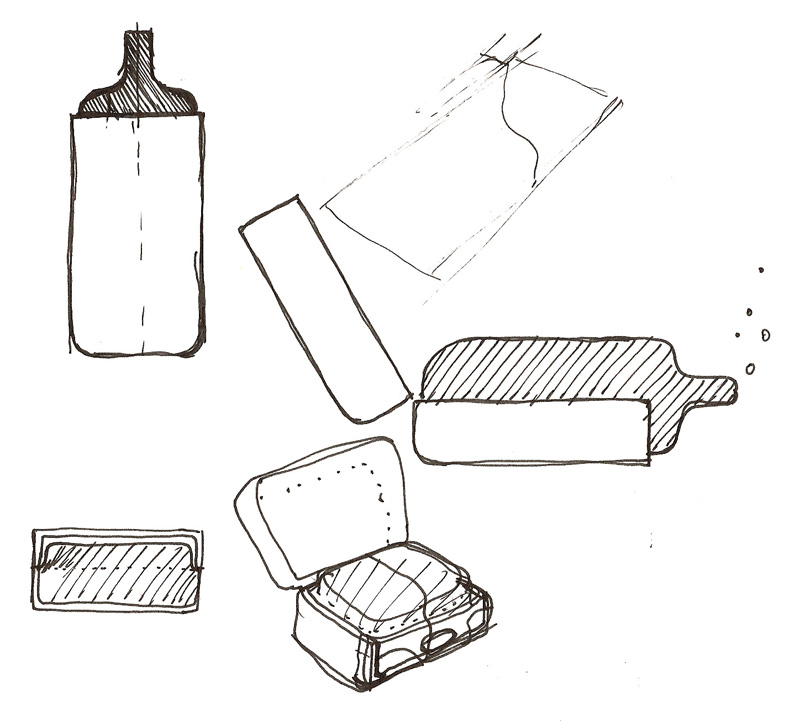
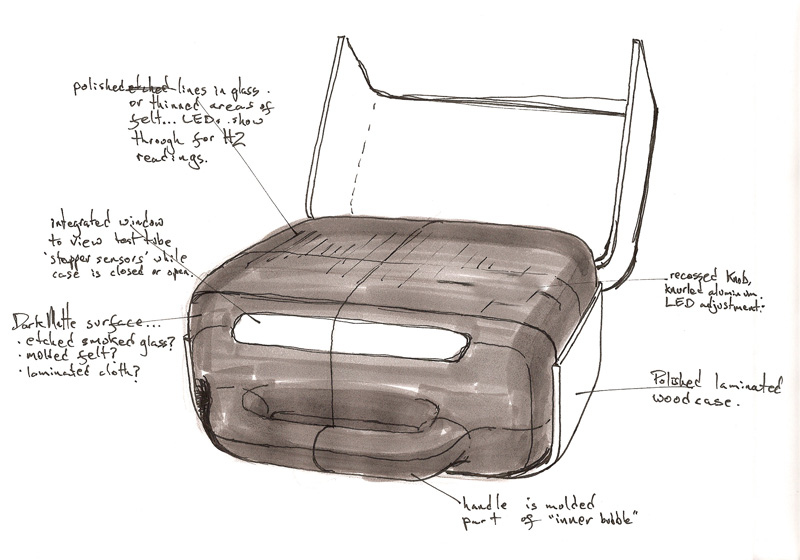
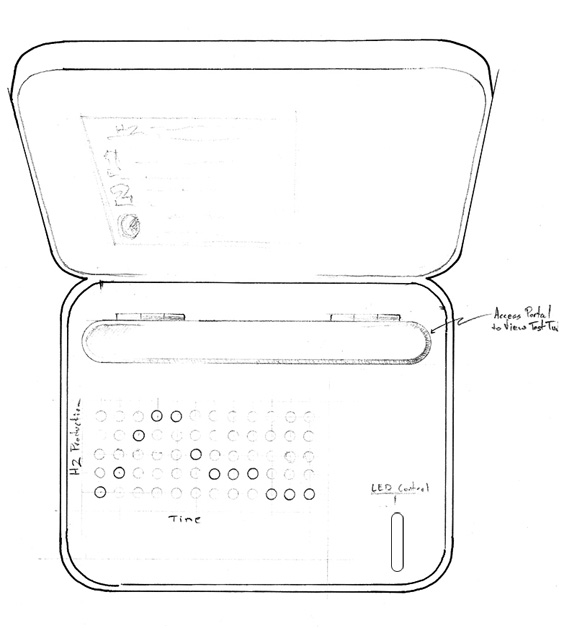
Conceptual Feel:
Imagine that the Lunchbox Lab would be carried upon this bike:
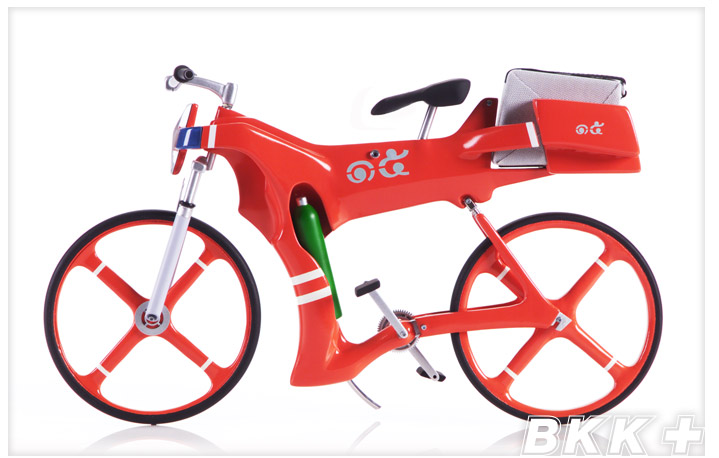
Early sketches

 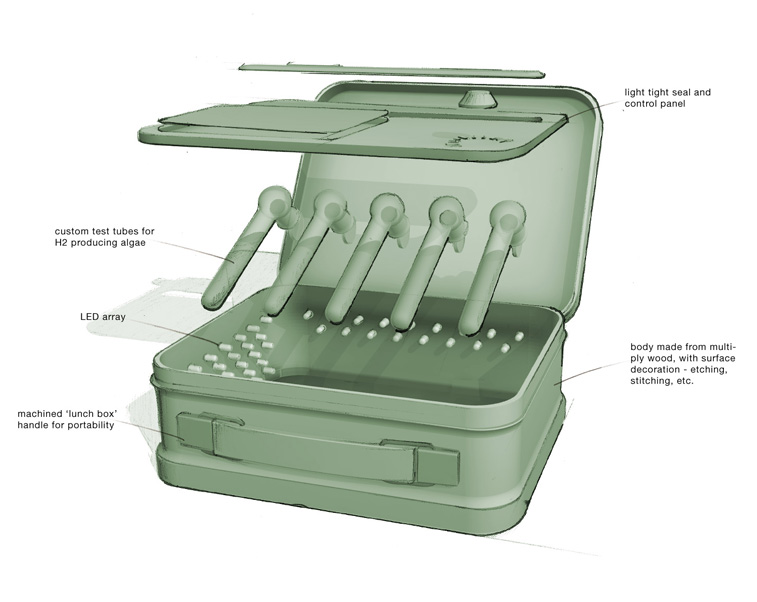
|
